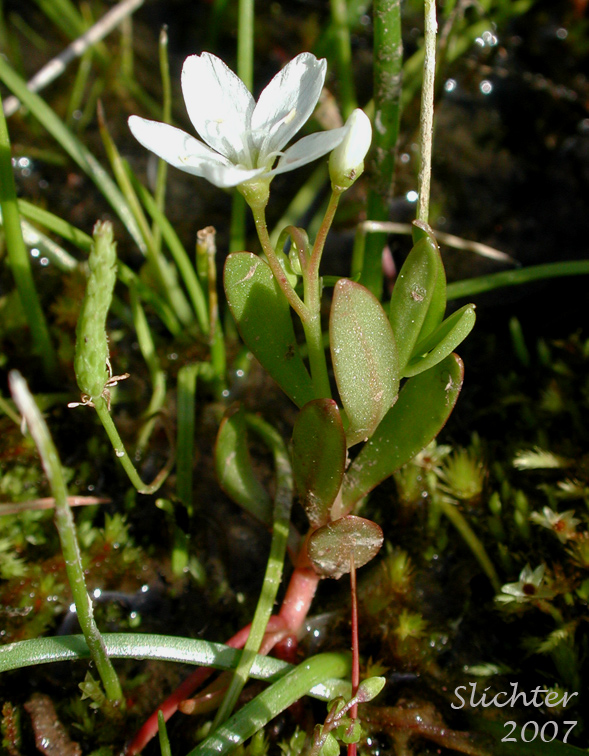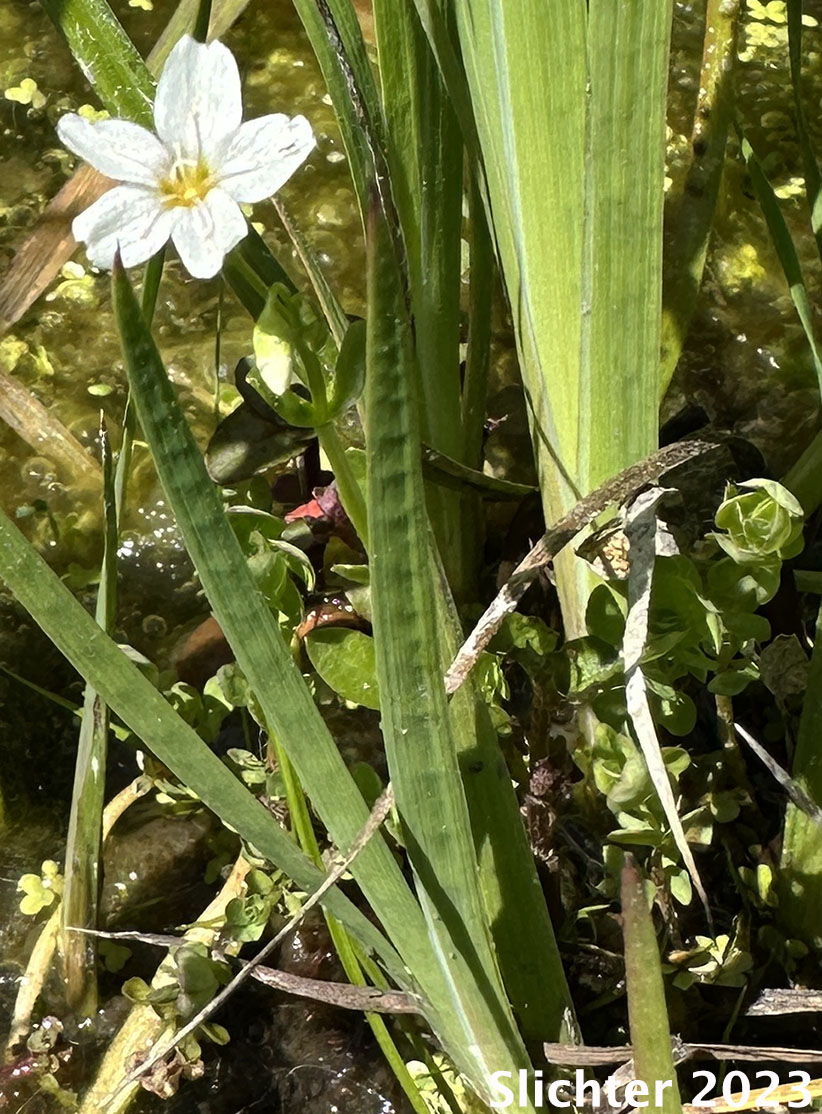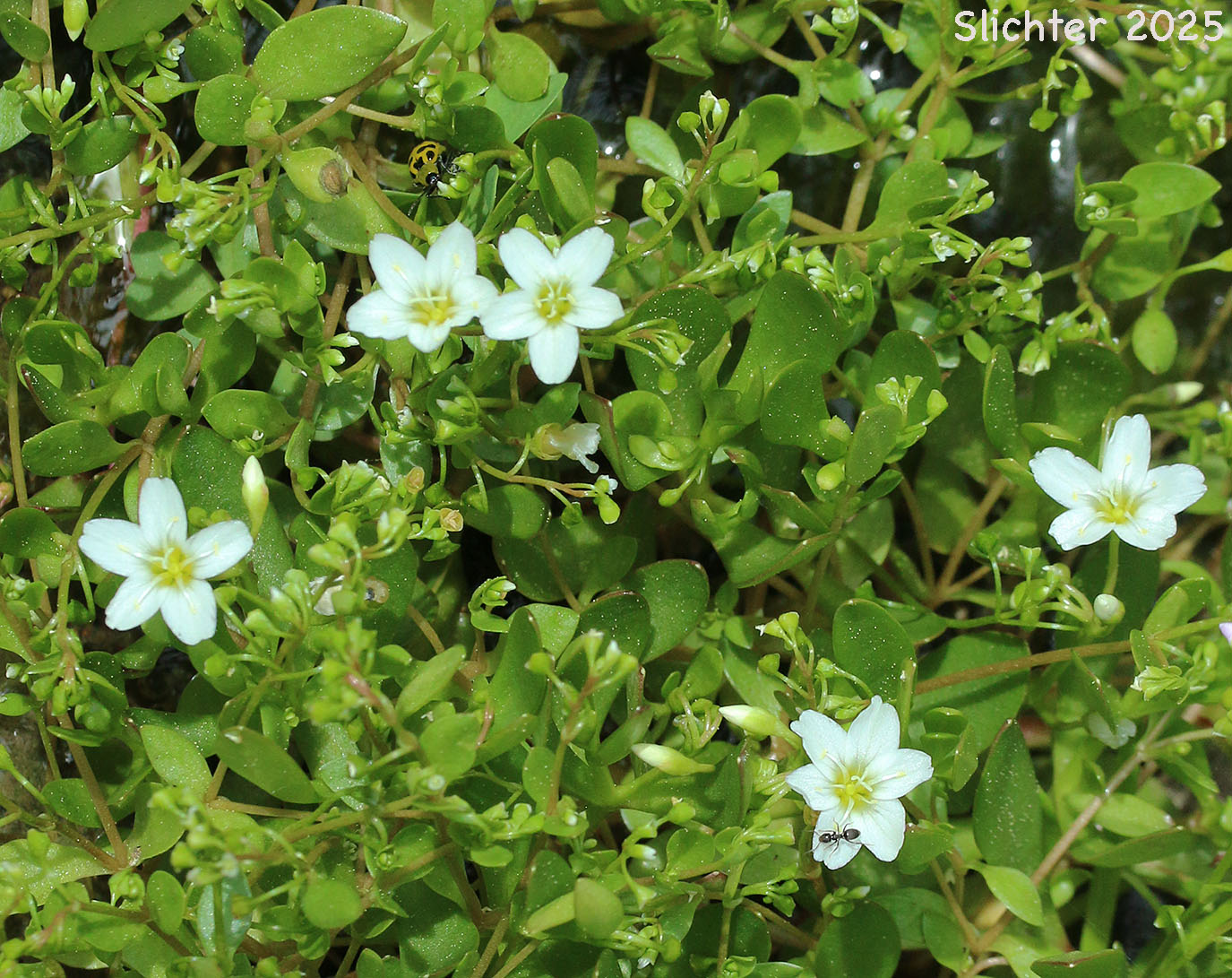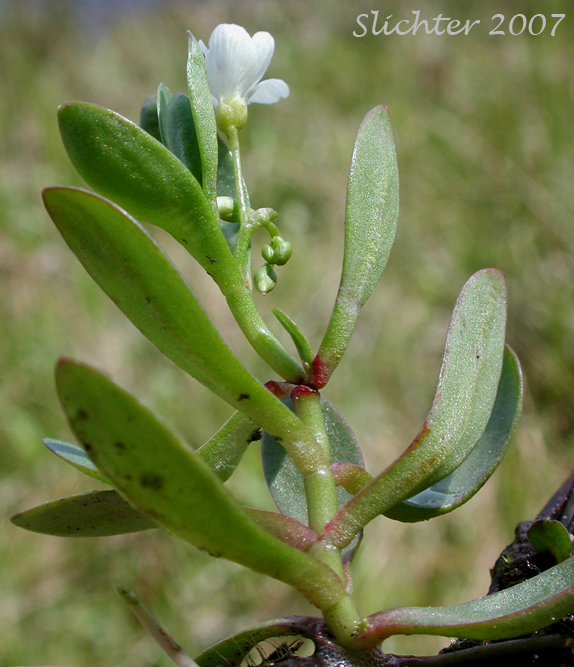Chamisso's Montia, Water Montia
Montia chamissoi
Synonyms: Claytonia chamissoi, Crunocallis chamissoi
 -
- 
The photo at left shows water montia in a moist area along a stream to the east of the Mt. Adams Highway...........May 13, 2007. Note the several pairs of opposite, fleshy leaves on the erect stems. The photo at right shows water montia in bloom along the irrigation trail adjacent to the Willard Springs Trail, Conboy Lake NWR.....May 20, 2023.
Characteristics:
Water montia is a perennial with wide spreading rhizomes, with
leafless stolons that root freely. The flower stems are erect, from 5-20 cm
tall, and simple to branched. The leaves are opposite on the stems with several
pairs of leaves present. Individual leaves are 2-5 cm long, oblanceolate to
rhombic-obovate in shape, and from 5-17 mm wide. The leaves narrow gradually
to a short petiole.
The inflorescence is a lax lax raceme arising from a leaf axil.
3-10 white or pink flowers are present. The 5 petals range from 5-8 mm long
while the two green sepals are 2-3 mm long.

Uses:
Like other members of this genus, water montia may be eaten
either raw, in salads, or cooked.
Habitat:
Water montia may be found in very moist places such as bogs or grassy wetlands and seeps
at low to medium elevation.
Range:
Water montia may be found from Alaska south to California (In
the Pacific Northwest, it is found mostly east of the Cascades.) To the east,
it may be found as far as Minnesota, Manitoba, Iowa, and south to New Mexico.
 -
- 
Two images of water montia spotted at a spring along a vernal stream in a drainage running uphill through open forest to the WSW of Dead Canyon, several miles west of the Klickitat River.....May 9, 2025.
 -
- 
The photo at left shows a close-up of the flower of water montia as seen in a moist area along a stream to the east of the Mt. Adams Highway..........May 13, 2007. Note that each anther is pressed up against the petal, and that the stigma is tri-lobed. The photo at right shows a close-up sideview of the flower of water montia. This species, like all members of the purslane family, has 2 fleshy green sepals at the base of the flower...........May 13, 2007.
 -
-  -
- 
The photo at left shows a close-up view of the opposite leaves and inflorescence of water montia as seen along the Willard Springs foot trail in Conboy Lake National Wildlife Refuge, at the southeastern corner of Mt. Adams...........May 4, 2007. Note again the opposite pairs of fleshy leaves on the erect stem.
The photo at center shows water montia in a moist area along a stream to the east of the Mt. Adams Highway...........May 13, 2007.
The photo at right shows a mass of water montia as seen at the Klickitat Canyon NRCA to the east of Mt. Adams..........June 22, 2008.
Paul Slichter